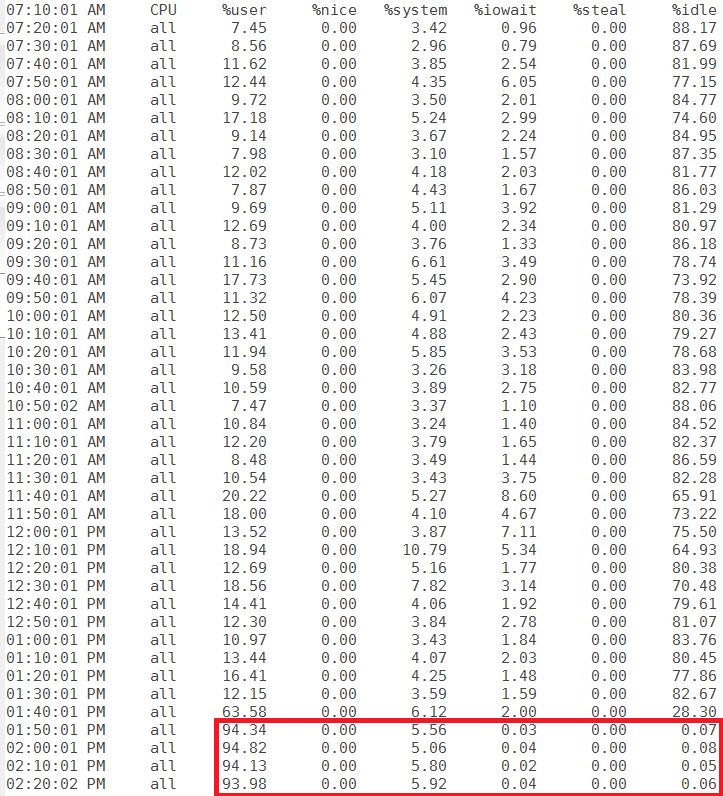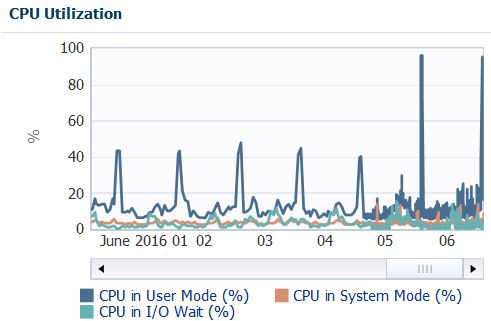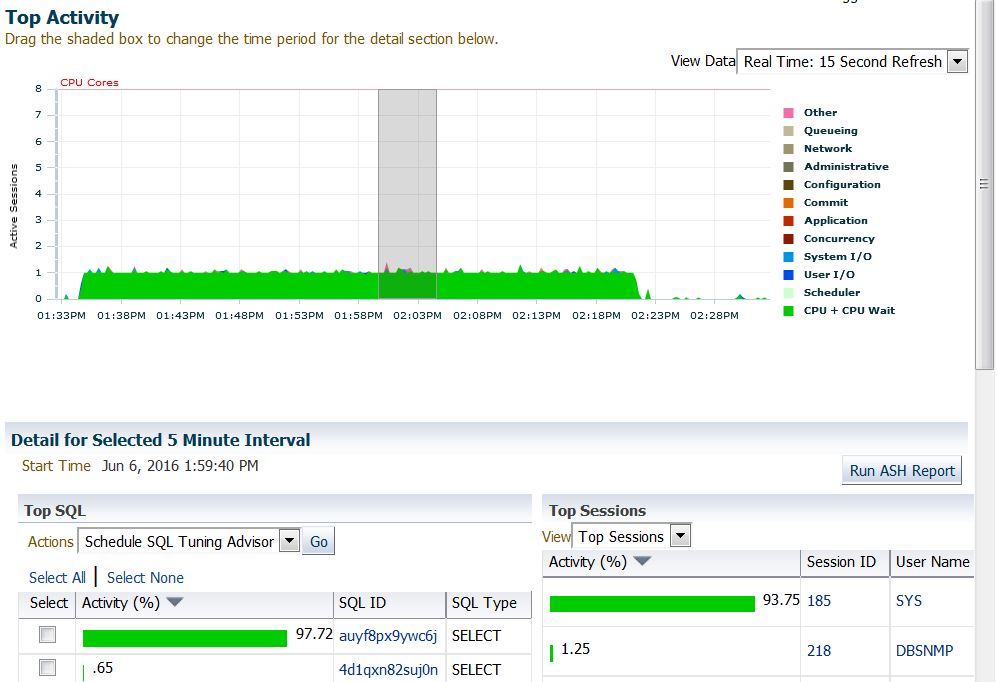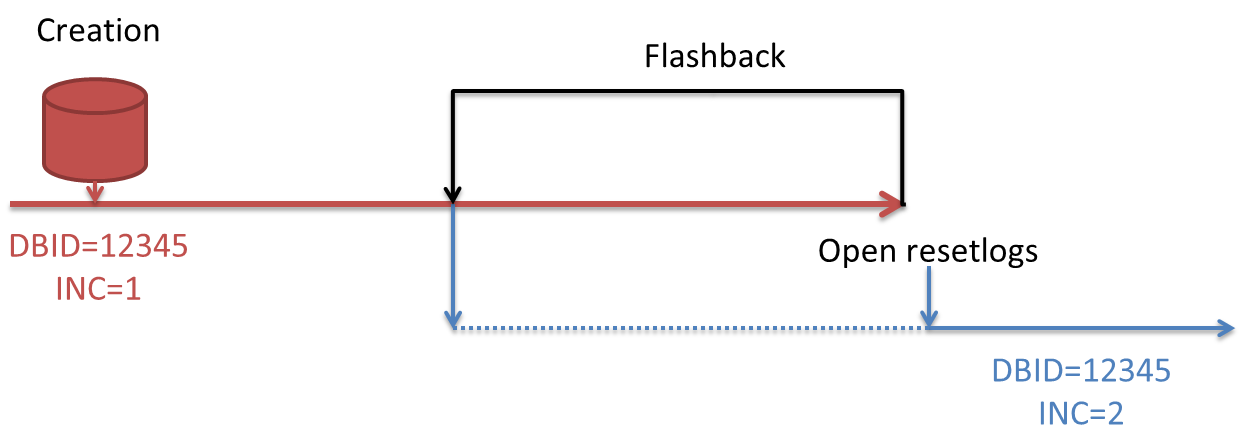In my previous post, I have shown that loading Adaptive Plans in the SQL Plan Baseline leads to using the original plan. Well, actually, this is true when you capture them via the OPTIMIZER_CAPTURE_SQL_PLAN_BASELINES parameter.
Thanks to a tweet by Neil Chandler, I’ve realized that it was a good idea to show also the case when the plan is loaded manually.
When the adaptive plan switches to the alternative plan, the plan_hash_value also changes, and can be loaded manually in the baseline with DBMS_SPM.
Let’s reset everything and retry quickly to:
- Capture the plan automatically (this will lead to the original plan)
- Load the plan manually (I will specify to load the alternative plan, if resolved)
- Drop the plan captured automatically
- Use the newly accepted baseline
|
1 2 3 4 5 6 7 8 9 10 11 12 13 14 15 16 17 18 19 20 21 22 23 24 25 26 27 28 29 30 31 32 33 34 35 36 37 38 39 40 41 42 43 44 45 46 47 48 49 50 51 52 53 54 55 56 57 58 59 60 61 62 63 64 65 66 67 68 69 70 71 72 73 74 75 76 77 78 79 80 81 82 83 84 85 86 87 88 89 90 91 92 93 94 95 96 97 98 99 100 101 102 103 104 105 106 107 108 109 110 111 112 113 114 115 116 117 118 119 120 121 122 123 124 125 126 127 128 129 130 131 132 133 134 135 136 137 138 139 140 141 142 143 144 145 146 147 148 149 150 151 152 153 154 155 156 157 158 159 160 161 162 163 164 165 166 167 168 169 170 171 172 173 174 175 176 177 178 179 180 181 182 183 184 185 186 187 188 189 190 191 192 193 194 195 196 197 198 199 200 201 202 203 204 205 206 207 208 209 210 211 212 213 214 215 216 217 218 219 220 221 222 223 224 225 226 227 228 229 230 231 232 233 234 235 236 237 238 239 240 241 242 243 244 245 246 247 248 249 250 251 252 253 254 255 256 257 258 259 260 261 262 263 264 265 266 |
SQL> connect / as sysdba Connected. SQL> DECLARE 2 v_dropped_plans number; 3 BEGIN 4 v_dropped_plans := DBMS_SPM.DROP_SQL_PLAN_BASELINE ( 5 sql_handle => 'SQL_6c4c6680810dd01a' 6 ); 7 DBMS_OUTPUT.PUT_LINE('dropped ' || v_dropped_plans || ' plans'); 8 END; 9 / PL/SQL procedure successfully completed. SQL> select sql_handle, plan_name, sql_text, enabled, accepted, fixed from dba_sql_plan_baselines; no rows selected SQL> alter system flush shared_pool; System altered. SQL> select sql_id, plan_hash_value, child_number from v$sql where sql_id='1km5kczcgr0fr'; no rows selected SQL> connect ludo/ludo Connected. SQL> ALTER SESSION SET OPTIMIZER_CAPTURE_SQL_PLAN_BASELINES = TRUE; Session altered. SELECT /*+ GATHER_PLAN_STATISTICS */ 2 a.data AS tab1_data, 3 b.data AS tab2_data 4 FROM tab1 a 5 JOIN tab2 b ON b.tab1_id = a.id 6 WHERE a.code = 'ONE'; TAB1_DATA TAB2_DATA ---------- ---------- ... 30 rows selected. SQL> r 1 SELECT /*+ GATHER_PLAN_STATISTICS */ 2 a.data AS tab1_data, 3 b.data AS tab2_data 4 FROM tab1 a 5 JOIN tab2 b ON b.tab1_id = a.id 6* WHERE a.code = 'ONE' TAB1_DATA TAB2_DATA ---------- ---------- ... 30 rows selected. SQL> ALTER SESSION SET OPTIMIZER_CAPTURE_SQL_PLAN_BASELINES = FALSE; Session altered. SQL> select sql_id, plan_hash_value, child_number from v$sql where sql_id='1km5kczcgr0fr'; SQL_ID PLAN_HASH_VALUE CHILD_NUMBER --------------------------------------- --------------- ------------ 1km5kczcgr0fr 2672205743 1 SELECT /*+ GATHER_PLAN_STATISTICS */ a.data AS tab1_data, 2 3 b.data AS tab2_data 4 FROM tab1 a 5 JOIN tab2 b ON b.tab1_id = a.id 6 WHERE a.code = 'ONE'; TAB1_DATA TAB2_DATA ---------- ---------- ... 30 rows selected. SQL> select sql_id, plan_hash_value, child_number from v$sql where sql_id='1km5kczcgr0fr'; SQL_ID PLAN_HASH_VALUE CHILD_NUMBER --------------------------------------- --------------- ------------ 1km5kczcgr0fr 2672205743 1 1km5kczcgr0fr 2672205743 2 SQL> ALTER SESSION SET OPTIMIZER_USE_SQL_PLAN_BASELINES = FALSE; Session altered. SELECT /*+ GATHER_PLAN_STATISTICS */ 2 a.data AS tab1_data, 3 b.data AS tab2_data 4 FROM tab1 a 5 JOIN tab2 b ON b.tab1_id = a.id 6 WHERE a.code = 'ONE'; TAB1_DATA TAB2_DATA ---------- ---------- ... 30 rows selected. SQL> select sql_id, plan_hash_value, child_number from v$sql where sql_id='1km5kczcgr0fr'; SQL_ID PLAN_HASH_VALUE CHILD_NUMBER --------------------------------------- --------------- ------------ 1km5kczcgr0fr 1599395313 0 1km5kczcgr0fr 2672205743 1 1km5kczcgr0fr 2672205743 2 SQL> connect / as sysdba Connected. SQL> VARIABLE cnt NUMBER SQL> EXECUTE :cnt := DBMS_SPM.LOAD_PLANS_FROM_CURSOR_CACHE( sql_id => '1km5kczcgr0fr',plan_hash_value => '1599395313'); PL/SQL procedure successfully completed. SQL> select sql_handle, plan_name, sql_text, enabled, accepted, fixed from dba_sql_plan_baselines; SQL_HANDLE PLAN_NAME SQL_TEXT ENABLED ACCEPTED FIXED ------------------------- ----------------------------------- -------------------------------------- --------- --------- --------- SQL_6c4c6680810dd01a SQL_PLAN_6sm36h20hvn0u55a25f73 SELECT /*+ GATHER_PLAN_STATISTICS */ YES YES NO a.data AS tab1_data, b.data A SQL_6c4c6680810dd01a SQL_PLAN_6sm36h20hvn0ud64ac9be SELECT /*+ GATHER_PLAN_STATISTICS */ YES YES NO a.data AS tab1_data, b.data A SQL> select * from table (DBMS_XPLAN.DISPLAY_SQL_PLAN_BASELINE('SQL_6c4c6680810dd01a', format=>'+adaptive')); PLAN_TABLE_OUTPUT ---------------------------------------------------------------------------------- -------------------------------------------------------------------------------- SQL handle: SQL_6c4c6680810dd01a SQL text: SELECT /*+ GATHER_PLAN_STATISTICS */ a.data AS tab1_data, b.data AS tab2_data FROM tab1 a JOIN tab2 b ON b.tab1_id = a.id WHERE a.code = 'ONE' -------------------------------------------------------------------------------- -------------------------------------------------------------------------------- Plan name: SQL_PLAN_6sm36h20hvn0u55a25f73 Plan id: 1436704627 Enabled: YES Fixed: NO Accepted: YES Origin: AUTO-CAPTURE Plan rows: From dictionary -------------------------------------------------------------------------------- Plan hash value: 2672205743 --------------------------------------------------------------------------------------------------------- | Id | Operation | Name | Rows | Bytes | Cost (%CPU)| Time | --------------------------------------------------------------------------------------------------------- | 0 | SELECT STATEMENT | | 25 | 425 | 3 (0)| 00:00:01 | | 1 | NESTED LOOPS | | 25 | 425 | 3 (0)| 00:00:01 | | 2 | NESTED LOOPS | | 25 | 425 | 3 (0)| 00:00:01 | | 3 | TABLE ACCESS BY INDEX ROWID BATCHED| TAB1 | 1 | 11 | 2 (0)| 00:00:01 | | * 4 | INDEX RANGE SCAN | TAB1_CODE | 1 | | 1 (0)| 00:00:01 | | * 5 | INDEX RANGE SCAN | TAB2_TAB1_FKI | 25 | | 0 (0)| 00:00:01 | | 6 | TABLE ACCESS BY INDEX ROWID | TAB2 | 25 | 150 | 1 (0)| 00:00:01 | --------------------------------------------------------------------------------------------------------- Predicate Information (identified by operation id): --------------------------------------------------- 4 - access("A"."CODE"='ONE') 5 - access("B"."TAB1_ID"="A"."ID") Note ----- - this is an adaptive plan (rows marked '-' are inactive) -------------------------------------------------------------------------------- Plan name: SQL_PLAN_6sm36h20hvn0ud64ac9be Plan id: 3595225534 Enabled: YES Fixed: NO Accepted: YES Origin: MANUAL-LOAD Plan rows: From dictionary -------------------------------------------------------------------------------- Plan hash value: 1599395313 ---------------------------------------------------------------------------------------------------- | Id | Operation | Name | Rows | Bytes | Cost (%CPU)| Time | ---------------------------------------------------------------------------------------------------- | 0 | SELECT STATEMENT | | | | 3 (100)| | | * 1 | HASH JOIN | | 25 | 425 | 3 (0)| 00:00:01 | | 2 | TABLE ACCESS BY INDEX ROWID BATCHED| TAB1 | 1 | 11 | 2 (0)| 00:00:01 | | * 3 | INDEX RANGE SCAN | TAB1_CODE | 1 | | 1 (0)| 00:00:01 | | 4 | TABLE ACCESS FULL | TAB2 | 25 | 150 | 1 (0)| 00:00:01 | ---------------------------------------------------------------------------------------------------- Predicate Information (identified by operation id): --------------------------------------------------- 1 - access("B"."TAB1_ID"="A"."ID") 3 - access("A"."CODE"='ONE') Note ----- - this is an adaptive plan (rows marked '-' are inactive) 65 rows selected. SQL> VARIABLE cnt NUMBER SQL> EXECUTE :cnt := DBMS_SPM.DROP_SQL_PLAN_BASELINE( SQL_HANDLE => 'SQL_6c4c6680810dd01a',plan_name => 'SQL_PLAN_6sm36h20hvn0u55a25f73'); PL/SQL procedure successfully completed. SQL> select sql_handle, plan_name, sql_text, enabled, accepted, fixed from dba_sql_plan_baselines; SQL_HANDLE PLAN_NAME SQL_TEXT ENABLED ACCEPTED FIXED ------------------------- ----------------------------------- -------------------------------------- --------- --------- --------- SQL_6c4c6680810dd01a SQL_PLAN_6sm36h20hvn0ud64ac9be SELECT /*+ GATHER_PLAN_STATISTICS */ YES YES NO a.data AS tab1_data, b.data A SQL> conn ludo/ludo Connected. SELECT /*+ GATHER_PLAN_STATISTICS */ 2 a.data AS tab1_data, 3 b.data AS tab2_data 4 FROM tab1 a 5 JOIN tab2 b ON b.tab1_id = a.id 6 WHERE a.code = 'ONE'; TAB1_DATA TAB2_DATA ---------- ---------- ... 30 rows selected. SQL> SELECT * FROM TABLE(DBMS_XPLAN.display_cursor(format => 'allstats last adaptive')); PLAN_TABLE_OUTPUT ------------------------------------------------------------------------------------------------------------------------------------------------------------------------------------ SQL_ID 1km5kczcgr0fr, child number 2 ------------------------------------- SELECT /*+ GATHER_PLAN_STATISTICS */ a.data AS tab1_data, b.data AS tab2_data FROM tab1 a JOIN tab2 b ON b.tab1_id = a.id WHERE a.code = 'ONE' Plan hash value: 1599395313 --------------------------------------------------------------------------------------------------------------------------------------- | Id | Operation | Name | Starts | E-Rows | A-Rows | A-Time | Buffers | OMem | 1Mem | Used-Mem | --------------------------------------------------------------------------------------------------------------------------------------- | 0 | SELECT STATEMENT | | 1 | | 24 |00:00:00.01 | 71 | | | | |* 1 | HASH JOIN | | 1 | 25 | 24 |00:00:00.01 | 71 | 1888K| 1888K| 1921K (0)| | 2 | TABLE ACCESS BY INDEX ROWID BATCHED| TAB1 | 1 | 1 | 10001 |00:00:00.01 | 62 | | | | |* 3 | INDEX RANGE SCAN | TAB1_CODE | 1 | 1 | 10001 |00:00:00.01 | 37 | | | | | 4 | TABLE ACCESS FULL | TAB2 | 1 | 100 | 100 |00:00:00.01 | 9 | | | | --------------------------------------------------------------------------------------------------------------------------------------- Predicate Information (identified by operation id): --------------------------------------------------- 1 - access("B"."TAB1_ID"="A"."ID") 3 - access("A"."CODE"='ONE') Note ----- - SQL plan baseline SQL_PLAN_6sm36h20hvn0ud64ac9be used for this statement 28 rows selected. |
To recap:
- The capture process will always load the original plan
- It is possible to decide to load manually the original one or the alternative one (if resolved)
- Using automatic capture is a bad idea
HTH
—
Ludo







